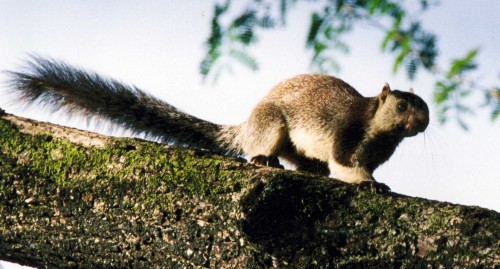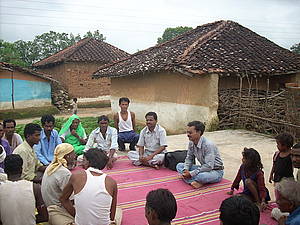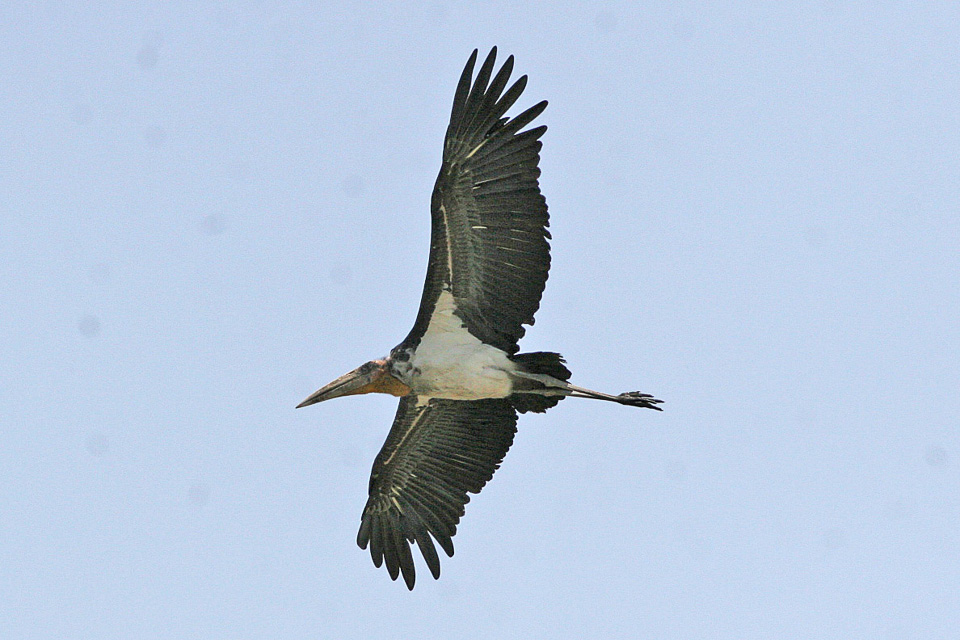The Grizzled Squirrel Wildlife Sanctuary at Srivilliputhur in Tamil Nadu has a special protection force quite different from most other sanctuaries. A very energetic group of 67 locals are part of an anti-poaching squad, who along with the forest officials, keep the wildlife sanctuary protected from poaching, forest fires and many other threats. Despite physical strain, lack of amenities and paucity of funds, the team ensures they work to keep the rare animals and the forests safe.

Spread over 486 sq km, the sanctuary which was declared a protected area in 1989 is home to a wide variety of flora and fauna. As the name suggests, grizzled giant squirrels are the flagship species. However, there is a wide range of herbivores, carnivores and omnivores. Resident and migrating elephants are common. Other animals found here include Tiger, Leopard, Gaur, Nilgiri tahr, Spotted deer, Barking deer, Sambar, Wild-boar, Porcupine, Nilgiri langur, Lion-tailed macaque, Common langur, Slender lorris, Bonnet macaque, Sloth bear, Indian Giant Squirrel and Flying Squirrel.
The varied topography is also home to some rare birds such as the Red faced Malkoha, Nilgiri Flycatcher and Malayan Night Heron. The Great Pied Hornbill is well and widely distributed in the sanctuary. The main raptors are the Serpent Eagle, Hawks and Black Eagle. The sanctuary also has 18 species of snakes, 15 species of lizards, over 10 species of amphibians and over 56 species of butterflies.
The sanctuary is located in the eastern slopes of the Western Ghats with a number of peaks reaching upto 1800 m . It is the eastern watershed boundary for the river Periyar and one of the best preserved forests south of the Palghat Gap.
Given the expanse of the area, the anti-poaching squad build of local members of the community have a task which is challenging and physically tiring, but which they do quite willingly.
The members work in close co-ordination with the farm owners along the periphery of the sanctuary. On the slightest hint of any suspicious activity, the vigilant residents alert the squad members by a phone call. They in turn help the forest officials nab the poachers and take action against them.
“The squad members are dedicated ones and keep combing the area night and day. The job is tough because the roads are poor or nil in many ranges of the forest,” said M. Parthiban, biologist at the sanctuary.
Protecting Against all Odds
It is not hard to know that the squad is a truly dedicated team. Most members work night and day for a monthly salary of Rs. 4000 which officials say they have not been paid for the last two months because of lack of funds.
Also most team members are close to retirement age like 45 year-old Madasamy who along with his companions treks more than 1,000 hectares of the forest to ensure that the wild animals are protected from poachers. Visibly short staffed the need for more such foot soldiers is permanent.
The acute shortage of funds prevents timely disbursement of salaries and the procurement of accessories says the forest official.
“We have submitted proposals for more funds and accessories for the squad members,” a senior official from the sanctuary said.
Through one such sponsor, they have been able to provide uniforms to the members.
Not just Poaching
A Naveen, a Tuticorin-based wildlife enthusiast, points to another problem besides poaching that needs to be tackled. He said the human intervention in the name of pilgrimage has to be checked.
“Though, the forest area is better protected by the anti-poaching squad, pilgrims activity should be regulated for the wellbeing of the forest and the wild animals,” he said.
There are several temples within the forests brings pilgrims into the forest resulting in its damage due to their harmful practices.
As per Wildlife Trust of India’s Rapid Action Project report, recent observations in the farms bordering the sanctuary show that many grizzled giant squirrels stray out of the sanctuary into the agricultural farms where they feed on the crops and also damage them. This is a potential threat to the squirrels as it upsets the local farmers who set traps and poison their crops to stop the squirrels from eating fruit crops.
Other threats include forest fires that may naturally occur during dry weather or deliberately set by cattle grazers to the grasslands to move around with ease. Though natural forest fires can at best be tackled by speedy action with the help of the squad members, the fires started by villagers can be prevented by sensitising them and advising them not to indulge in such activities say officials.
The Anti-poaching squad thus is working on a number of aspects besides poaching. Such community based modules are needed in all protected forest areas to minimise man-animal conflicts and use the local network to tackle major problems like poaching. If the squad members are amply rewarded and recognised for the service they are doing, their will to work shall only improve. Undoubtedly, more young villagers too will want to become a team member. Wildlife conservation cannot truly be a success unless the local community is actively energised and involved too.
About the Grizzled Giant Squirrel
IUCN’s Red List of Threatened Species Status – Near Threatened
The grizzled giant squirrel (Ratufa macroura ) is named so because of the prominent white tuft of hair on the tail and a greyish, to brown coloration of hair all over the body giving it a grizzled appearance. It’s extremely long tail helps it live on tree tops.
It is found in the Western Ghats of India and Sri Lanka. In India most of the wild population is found at the Grizzled Squirrel Wildlife Sanctuary at Srivilliputhur, Tamil Nadu. With just 300 individuals remaining in southern India, the squirrel needs more tree habitats and more close monitoring to ensure, conflicts especially with farmers do not threaten its life in the wild.
More Related stories,
Interesting Endangered Animals Facts from A to Z
Tribesmen Raising Grizzled Giant Squirrel
Villagers Give up their Land for Elephants
Image via cc/Flickr by Dhruvaraj S and Wikipedia Commons






One thought on “Locals become Guardians of the Grizzled Giant Squirrel”